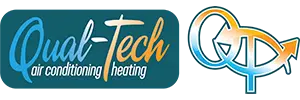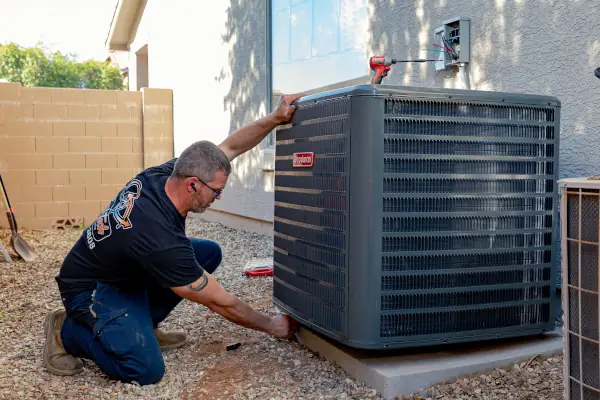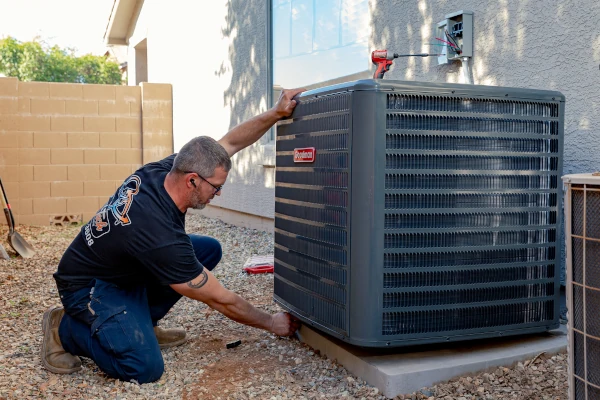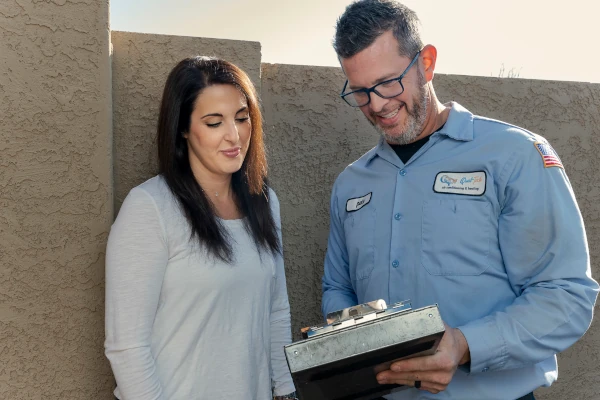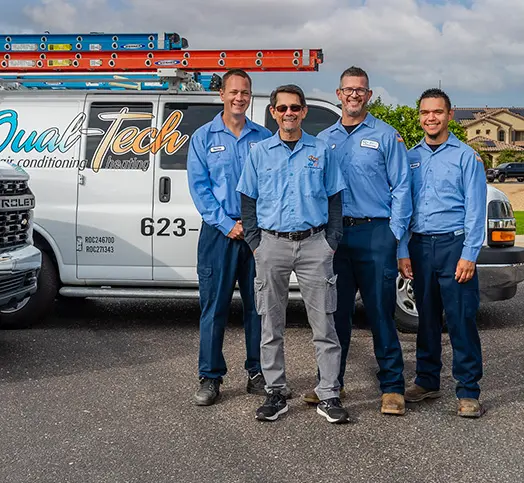Air conditioning is an essential comfort for many homes and businesses, but AC cost in Arizona can vary dramatically. From a few hundred dollars for a window unit to tens of thousands for a central system, the price tag largely depends on the size, features, and efficiency of the equipment.
Understanding the key factors that influence AC costs is crucial for making an informed purchasing decision. By weighing upfront expenses against long-term energy savings, homeowners and business owners can find the right balance of performance and affordability to meet their cooling needs.
Factor #1: AC Size and Capacity
Air conditioning units are sized based on their cooling capacity, typically measured in British Thermal Units (BTUs) or tons. One ton of cooling is equal to 12,000 BTUs per hour. Larger units with greater cooling power naturally come with a higher price tag. Window units range from 5,000 to 24,000 BTUs, while central AC systems are sized from 1.5 to 5 tons.
The size of the AC unit needed is determined by factors like the square footage of the space, ceiling height, insulation levels, and number of windows. Properly sizing the system is crucial, as an undersized unit will struggle to adequately cool the space, while an oversized unit will waste energy and may not dehumidify properly.

Window Units/Portable Units: $150 - $800
Window units are the most affordable option, typically ranging from 5,000 to 24,000 BTUs and $150 to $800 for the unit. They are inexpensive because they are self-contained and only require installation in a window opening. Portable ACs offer similar capacity (8,000 to 16,000 BTUs) for $300 to $800, but require venting and drainage.
Mini-Splits: $2500 - $7000
Ductless “mini-split” systems are more complex, with an outdoor compressor/condenser unit and one or more indoor air handlers. These cost $2,000 to $5,000 for the equipment, plus $500 to $2,000 for installation. The ductless design allows for flexible zoning and avoids the expense of installing central ductwork.

Central Split Systems: $6000 - $13000
Central split systems, which have a separate outdoor condenser and indoor air handler, range from 1.5 to 5 tons ($3,000 to $10,000 for the unit) plus $1,000 to $3,000 for professional installation. These whole-home systems provide the most cooling capacity but require extensive ductwork. Attic-mounted split systems may cost slightly more due to the complexity of installing the indoor unit in the attic space, while garage-located split systems can be a more affordable option that avoids the need to run ducts through living spaces. Regardless of the indoor unit location, these central split systems remain the most powerful and flexible cooling solution for whole homes.
Packaged Units: $5000 - $10000
Packaged rooftop units integrate the condenser, compressor, and air handler into a single unit that sits on the roof. These all-in-one systems are common for commercial and industrial buildings, and typically cost $3,000 to $8,000 fully installed. While the packaged design simplifies installation compared to split systems, the larger cooling capacities and specialized equipment for rooftop mounting drive up the overall price, including around $2000 for professional installation.
Factor #2: Cooling Technology
The type of technology used in an AC unit is another key driver of cost. There are several different compressor and refrigerant technologies found in modern air conditioning systems, each with its own price and efficiency implications.
Standard Compressors
Standard refrigerant-based compressors are the most common and affordable option. These traditional systems use refrigerants like R-22 or R-410A to transfer heat. While reliable and widely available, standard compressor ACs tend to be less energy efficient compared to newer technologies.
Heat Pumps: Similarly Priced
Heat pump systems are generally about as expensive as standard compressors. Heat pumps function as both air conditioners and heaters, providing year-round climate control. By using refrigerant to transfer heat in both directions, heat pumps can heat and cool a home. While heat pumps offer this added functionality, they do not typically cost significantly more than a comparably sized standard AC unit. In fact, their price is often similar, depending on the brand and model. However, the heating potential of a heat pump may be less useful in Arizona, where the climate is typically warm and the need for heating is minimal.
Inverter-Driven Compressor: 50-100% More Expensive
Inverter-driven compressors are a more advanced and efficient option. Rather than running at a fixed speed, inverter compressors can adjust their output to match the cooling demand. This allows them to operate more efficiently and use less electricity, but the technology comes at a higher upfront cost, typically 50-100% more than standard compressor systems.
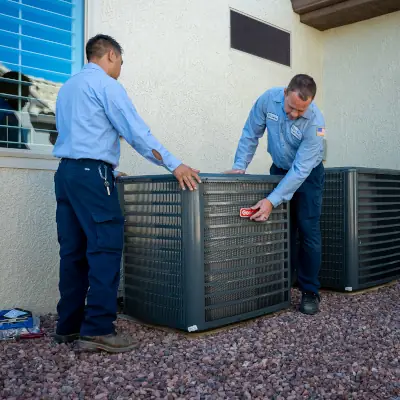
Factor #3: Energy Efficiency
The energy efficiency of an AC unit plays a key role in its overall cost. Air conditioners are now rated by their Seasonal Energy Efficiency Ratio 2 (SEER2), which measures how much cooling output they provide per unit of electricity consumed under updated testing standards. Units with higher SEER2 ratings are more efficient and typically come with a higher upfront cost, but they can offer substantial savings in energy bills over time.
For example, a central AC system with a 14 SEER2 rating may cost between $5,000 to $7,000, while a higher 17.2 SEER2 model with similar cooling capacity could range from $7,000 to $10,000. The 17.2 SEER2 system could save up to 50% on your electric bill compared to lower-rated units. While the more efficient system carries a higher initial price, homeowners can quickly recoup those costs through significant energy savings over the system’s lifespan.
Factor #4: Additional Expenses
Beyond the base cost of the AC unit and installation, certain advanced features can significantly increase the total price tag. Some of the premium features and upgrades that drive up costs include:
- Smart thermostats and WiFi connectivity ($200-$500 additional)
- Basic WiFi thermostat: $200-$300
- Premium smart thermostats with learning capabilities: $300-$500
- High-end air filtration systems ($400-$1,500 additional)
- HEPA filtration: $400-$800
- UV light purification: $500-$1,000
- Electronic air cleaners: $800-$1,500
- Specialty installation requirements ($500-$2,000 additional)
- Custom ductwork modifications: $500-$1,000
- Rooftop mounting equipment: $1,000-$2,000
- Structural reinforcement if needed: $500-$1,500
The inclusion of multiple premium features can significantly impact the final price, potentially adding $2,000 to $7,000 to the overall system cost depending on the combination of features selected.

Understanding the various factors that influence air conditioning costs is crucial for making an informed purchasing decision. While it may be tempting to choose the lowest-priced option, considering long-term operating costs, energy efficiency, and reliability can lead to better value over time. A properly sized system with the right balance of features for your needs might cost more upfront but can provide significant savings through lower utility bills and reduced maintenance costs. By carefully weighing factors like unit type, technology, efficiency ratings, and optional features, you can find an AC system that meets both your comfort needs and budget constraints.
